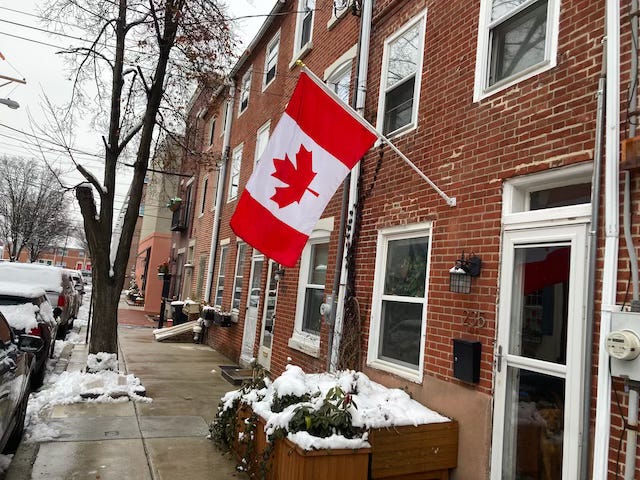Preventing And Regulating Junkyard Fires Is Not A Local Issue
NJ Spotlight Coverage Goes From Bad To Worse
We Expose A Corrupt Co-Optation Project
NJ Spotlight did another story today – their third – about the most recent junkyard fire in Camden at the DEP regulated EMR scrap recycling facility, see:
In terms of getting to the source of the problem and holding government accountable for their longstanding and repeated failures to enforce environmental laws and protect the community, the coverage is getting worse, not better.
I blasted Spotlight’s prior coverage and the pathetic DEP’s $7,600 enforcement fine and explained the weakness in current DEP regulations and lax DEP oversight.
I explained how this facility – located in perhaps the worst environmental justice community in the country – was NOT regulated by the NJ Environmental Justice law and DEP environmental justice regulations.
Most importantly, I specifically highlighted both the toxicity of the materials stored and processed at the EMR junkyard and the extreme hazards from exposure to the smoke from burning that material, which Spotlight mislead readers by describing it innocuously as “fluff”. It is known as toxic “Auto Shredder Residue“:
B. CHEMICAL CHARACTERISTICS
The chemical characteristics of ASR are typified by the presence of a very small amount of residual metals, such as lead, cadmium, copper and zinc, as well as various petroleum hydrocarbons (e.g., lubricating oils and other residual automotive fluids) and PCBs. Concentrations of certain residual metals in untreated ASR can approach or exceed California TTLCs and STLCs. For example, untreated ASR often contains total lead in excess of 1,000 mg/kg and WET extractable lead in excess of 5 mg/l.
I recommended:
DEP Must Revoke Permits, Pursue Criminal Enforcement, And Shut Down EMR Scrap Metal Recycler For Repeat And Knowing Major Violations.
As usual, I sent this information to NJ Spotlight reporters and editors. So, one would expect that followup coverage would at least report SOME of these critical issues – but instead, they all were ignored and the coverage got WORSE.
DEP regulation of EMR facility was not even mentioned. Worse, the sub headline of the story created a false impression that DEP took strict enforcement action. Check this out:
Company’s waterfront scrapyard previously caught fire in 2022, been fined by the DEP multiple times
Did EMR or DEP write that?
Fined. Multiple. Times? Wow. Sounds like DEP is really kicking ass, right?
But next we learn:
[EMR] employs more than 100 locals, but between EMR and the scrapyard’s previous owner, it has been fined multiple times by the state’s Department of Environmental Protection, including $24,000 worth of fines in 2007 alone.
EMR USA is a large corporation with over $500 million in annual revenues.
A $24,000 fine – “alone”! – is not even lunch money. And it’s 18 YEARS OLD, and was issued by the notoriously anti-DEP regulatory Christie administration. And that fine was issued BEFORE enactment of the NJ environmental justice law, which is supposed to be about remedying the impacts from prior lax regulation in environmental justice communities.
Notably, that paltry Christie DEP fine is LARGER than the pathetic $7,600 fine issued more recently by the Murphy DEP. That ought to tell you something.
Do the people and local officials in Camden even KNOW that DEP is the primary agency responsible for the safety and environmental impacts of the EMR facility?
The people interviewed in the Spotlight story never mentioned DEP.
Spotlight’s coverage framed the issue from a local fire department investigation angle.
What could explain the lax DEP regulation and enforcement AND the lame press coverage by NJ Spotlight?
First, let’s start by noting that EMR is a UK based global corporation. The Camden facility is part of the EMR US affiliate, with over $500 million in annual revenues in 2023 – (other reports say far more, $1 – $5 billion).
Second, we note that EMR is legally represented by Michael Gross, one of NJ’s most powerful and politically connected corporate lawyers (see DEP air permit hearing transcript). Mr. Gross not only knows the law, he knows how to pull strings and play the DEP political game too and has been playing it for decades.
Third, of course, we must note that this is Camden, a notoriously politically corrupt city and connected to the NJ Democratic Party that runs the DEP.
Fourth, Murphy DEP Commissioner LaTourette is a former corporate lawyer with close ties to South Jersey Democrats.
Fifth, LaTourette has proven extremely adept at co-opting environmental groups and silencing their criticism, typically with DEP grant funding. So the local Camden’s Center for Environmental Transformation might just be taking DEP money. We note that they are part of a DEP funded project called the Camden Collaborative Initiative.
That Camden initiative stresses “collaboration”, so criticism of DEP is bad form and DEP gets the protection it pays for:
The Camden Collaborative Initiative (CCI) is a solutions-oriented partnership between governmental, non-profit, private, and community-based agencies formed to plan and implement innovative strategies to improve the environment and the quality of life of Camden’s residents.
When does a “partnership” become co-optation and sellout? I think we’re there.
So, given all these facts, it’s pretty obvious what kind of corruption is going on here.
But what explains NJ Spotlight’s journalistic malpractice? Could Mr. Gross or someone at EMR be pulling strings at PBS?
[End Note: I’m just now reading the transcript of a public meeting on the DEP air permit, and noted this highly misleading statement by ERM: (@ page 34)
MR. DAVID STEINBERG: Okay. Are you aware of any pollutants, hazardous fumes that would be harmful to health that are being released due to the fires?
MR. JOE BALZANO: We have not found any during the monitoring. There was nothing that was recorded that was dangerous to the public.
That’s a flat out lie or the monitoring that was conducted was seriously flawed.





